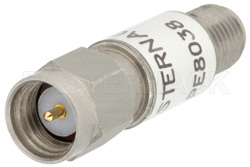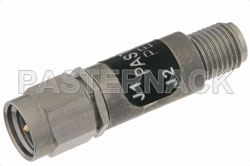RF limiters and detectors are used widely throughout the RF and microwave industry in a wealth of circuit applications. For example, radar transceivers, telecommunication radios, test and measurement equipment, and other circuits rely on RF limiters for receiver protection, as well as the protection of critical circuit components that may experience high-peak voltage and current transients internal to a circuit. RF detectors are used to convert specific RF signal features to analog signals, which can then be used to trigger circuit functions or adjust internal gain control circuitry to the appropriate values. Both RF limiters and detectors can be found in transmitter and receiver circuits, and as these components are often integrated directly into the signal chain, their impact on circuit function bears consideration.
 RF limiters are commonly located from the antenna toward the amplifier and signal conditioning circuitry in a receiver, or anywhere in a signal chain that may experience high transient voltages/current and a sensitive component may need to be protected. The placement of an RF limiter could be right before a low-noise amplifier in a receiver, or inline throughout a circuit. Additionally, RF limiters are often placed in front of switch assemblies, power dividers/combiners, detectors, and mixers. As RF limiters can be packaged in surface mount, die, stripline, coaxial, or waveguide-based packages, RF Limiters can be placed throughout a circuit. Moreover, limiters are also commonly integrated into other circuit assemblies, such as detectors, amplifiers, and mixers.
RF limiters are commonly located from the antenna toward the amplifier and signal conditioning circuitry in a receiver, or anywhere in a signal chain that may experience high transient voltages/current and a sensitive component may need to be protected. The placement of an RF limiter could be right before a low-noise amplifier in a receiver, or inline throughout a circuit. Additionally, RF limiters are often placed in front of switch assemblies, power dividers/combiners, detectors, and mixers. As RF limiters can be packaged in surface mount, die, stripline, coaxial, or waveguide-based packages, RF Limiters can be placed throughout a circuit. Moreover, limiters are also commonly integrated into other circuit assemblies, such as detectors, amplifiers, and mixers.
A common implementation of an RF limiter is to use material features that enable incident-power-controlled, variable resistance. Typically, this involves the use of PIN diodes, and sometimes larger limiter assemblies with multiple diodes and other circuitry is used. The max/peak input power, insertion loss, threshold level, and series resistance/capacitance are the major parameters when considering a RF limiter. Certain applications may require specific combinations of parameters that cannot be met with a single diode, and the circuit complexity is increased. However, the higher threshold level and power handling leads to a tradeoff by increasing insertion loss and series resistance/capacitance.
 RF detectors can be used in a wide range of signal detection applications, including peak detection, average detection, and video detection. An example application is to use a RF detector to gauge the received signal strength in a radio receiver, and adjust the gain control circuitry to properly maintain an optimized signal strength. Many telecommunications and spectrum regulations require precise levels of output power, and a RF detector could also be used in the output path of a transmitter to ensure that the output does not exceed the regulatory limits.
RF detectors can be used in a wide range of signal detection applications, including peak detection, average detection, and video detection. An example application is to use a RF detector to gauge the received signal strength in a radio receiver, and adjust the gain control circuitry to properly maintain an optimized signal strength. Many telecommunications and spectrum regulations require precise levels of output power, and a RF detector could also be used in the output path of a transmitter to ensure that the output does not exceed the regulatory limits.
There are several types of RF detectors that are designed to meet specific circuit requirements. Many RF detectors are made from simple diodes, and others are made from more advanced diode construction techniques, such as Schottky diodes or tunnel diodes. More complex detector circuits using multiple diodes exist, and can be used for voltage multiplication and increasing the detectable output voltage range of a detector. There are various diode technologies to improve the minimum detectable signal, such as zero-bias diodes and low-barrier diodes. Moreover, in order to isolate the signals being detected, a detector circuit may be integrated with a directional coupler to capture either the forward or reverse signal strength.




 Pasternack Blog
Pasternack Blog
